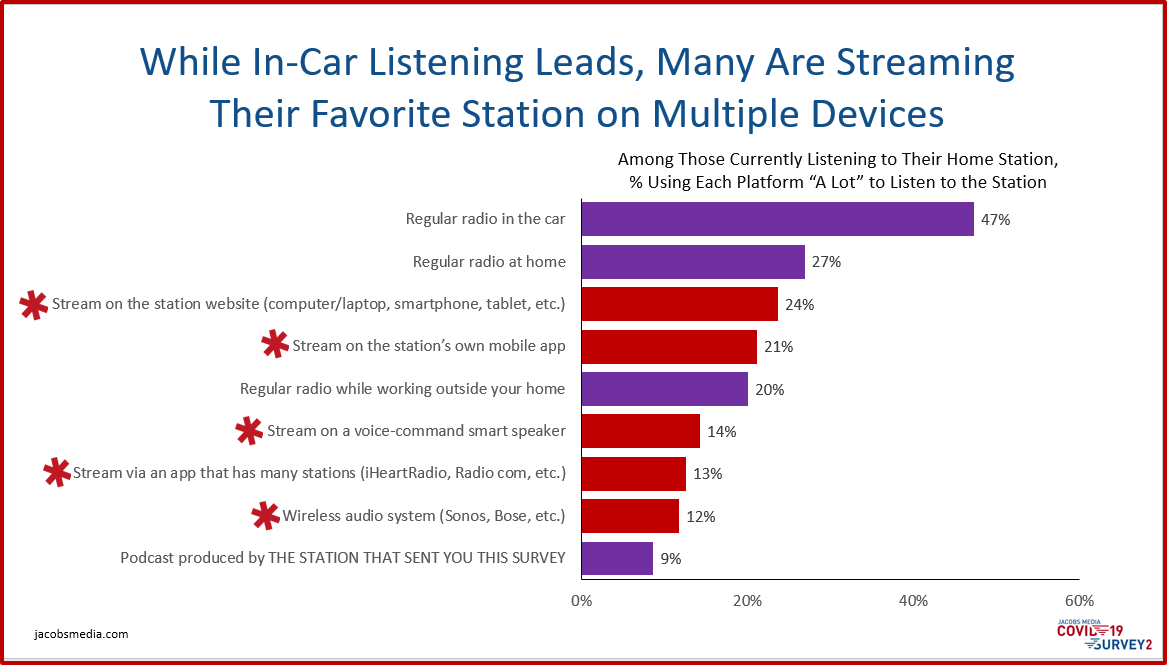
Some would call math a discipline; others would call it a language.
I’ve always called it the stumbling block between me and getting a college degree. As someone knee-deep in audience research throughout the year, the truth is that I’m more adept at the image of math on the upper right than those complex formulas on the chalk board.
Believe it or not, however, my rudimentary grasp of math is actually what has made me a better analyst. Marketers, programmers, sales managers, and other broadcasting decision-makers always want it simplified. What do the numbers mean to my radio station? And what can I do to improve them?
As a result, the ability to boil down numbers has become one of my main assets. Combined my programming experience, the ability to study numbers – whether they’re from Nielsen, Gallup, or Jacobs Media surveys is my “superpower.”
For today’s post, I’ve had my cape and tights dry-cleaned, so I’m ready to help you answer a common question I’ve heard a lot lately, since so many consumers are spending time at home:
When it comes to promoting the station stream, which device, gadget, or platform is most important?
Just for reference, that query has become more common because programmers are seeing increased streaming in their digital metric reports. And no wonder. Our most recent COVID-19 study among core commercial radio listeners reveals there are many avenues they can use to stream the station.
Note that while in-car listenership is still on top (although nowhere near as strong as it would be in a “normal” period), I’ve highlighted streaming on various devices in red. The takeaway here is that many are finding multiple ways to stream their favorite radio station, dependent on device access and convenience:

But promo inventory is always tight – even in a pandemic. And the basics of attention-getting is to focus messaging on as few topics as possible. So which streaming pathway should programmers be promoting most?
Some of you would expect me to respond with a consultant-esque response:
It depends.
And to that I would add the equally cliche, “There’s no one-size-fits-all solution.”
Technically, that’s true. Priorities will shift, depending on the format, the brand, and other circumstances and variables.
But when you accrue more than 46,000 respondents across North America – many of whom are P1s – as we did in January and February of this year in Techsurvey 2020, you’ve got a robust enough sample to draw some key conclusions. And when I need some “re-centering,” it’s always helpful to take a trip to the pyramids – the Media and Brand Pyramids, that is.
A look at the former for this year’s survey – the media, gadgets, and activities core radio listeners engage in most and least – reveals important truths about core radio listeners. I’ll be your tour guide today, and let me take you to a few “points of interest:”

Number 1, of course, is that audio streaming is something most core radio listeners do every week. In fact, nearly two-thirds stream any kind of audio at least weekly – a solid core of listeners ready and willing to contribute their quarter-hours. You might wonder whether there’s been more streaming since the COVID-19 outbreak. When it comes to video streaming, of that there is no doubt. And our coronavirus studies indicate similar trends are in play for audio streaming since so many have been stuck at home – many without a “regular radio” available to them.
The second POI is smart speaker penetration. This is a fast-growing, exciting sector. Now, one in three TS20 respondents own one of these devices, mostly Amazon products in the U.S. And the growth of these highly affordable devices has been nothing short of meteoric – tripling in just four years.
But a large percentage of the population have not taken the plunge – and may not anytime soon. A key reason many have not enlisted in the “Alexa Army” has more to do with comfort and security than finances or tech know-how. In fact, many of those who have refused to bring a smart speaker into their bedrooms, kitchens, or offices are wary – in some cases, extremely so – of the invasion of their privacy.
I’ve heard it again and again in focus groups:
“I don’t want to bring a device into my home that listens to my conversations.”
And while a rational response might be to point out how most microphones in our smartphones are actively “listening” (that’s how Siri or your Google Assistant hears us), smart speakers conjure up considerably more paranoia. And every time there’s a news story about one of these devices being used as evidence in a court case, these already guarded consumers become even more averse to bringing one into their homes.
It will be several more years before smart speaker ownership achieves true critical mass. Even though “voice” is an exciting platform, overcoming these speed bumps will take years. Everyone in radio should be optimistic about how more and more listeners are turning to their Amazon and/or Google Home devices for conveniently listening to the radio in people’s abodes, but they are nowhere near as ubiquitous as microwave ovens – or even regular radios.
That bring us to POI #3 – smartphone ownership. It has now broken the 90% barrier among radio fans. We’ve been conducting these Techsurveys since back in 2004-05, and these penetration numbers have increased every single year – including 2020. At a 92% level, there’s not a lot of headroom. But I’m sure many of you know people in your orbit – OK, Luddites – who bought their smartphones very late in the game.

And to put an exclamation point on it, check out POI #4 – nearly seven in ten have downloaded a radio/music-centric app on a mobile device. While there are many ways to stream radio stations on a phone or tablet, the app has become a convenient, comfortable option. And that’s clear when you study the hierarchy of this pyramid.
Whether it’s an individual app for a radio station or an “aggregator” like iHeartRadio or Radio.com, the pathway to streaming via applications is especially common, convenient, and yes, familiar.
The coronavirus outbreak has been an important turning point in the ways and means consumers listen to radio stations. More and more is not taking place on “regular radios,” while streaming grows in importance.
A bit of “free” consulting device is that most stations should be consistently reminding their audiences of the various ways in which they can access your content.
But to deliver that message effectively and efficiently, radio broadcasters need to set priorities. And that requires reliable research in order to craft a strategically sound promotional plan.
That’s why I’m always going to advise programmers, marketers, and digital directors to “do the math.” Smart speakers will no doubt continue to grow in importance as they become more ubiquitous. But for most stations, there are other access points that provide an even more seamless way for your fans to hear your morning show, your contests, or your all-request lunch show.
The truth is out there. Just do the math.
- What To Do If Your Radio Station Goes Through A Midlife Crisis - April 25, 2025
- A 2020 Lesson?It Could All Be Gone In A Flash - April 24, 2025
- How AI Can Give Radio Personalities More…PERSONALITY - April 23, 2025




Tight promo inventory is always an issue, particularly if you have big contesting or events to promote. I have found that the easiest way to get in streaming directives is to tie them into existing promos. For example, if you are promoting your special weekend, drop in a quick streaming nudge.
Good one, David. Each to tag on a quick reminder.
I wonder if the quality of the streaming experience isn’t as big or even a bigger issue than the platform. I can’t find any fault with regularly reminding people of all the platforms that stream a station, but easy access to a mediocre product only gets you so far.
It seems to be a good time for radio to address its steeaming experience and it’s clunkiness.
Oh, Bob, how we’ve tried. As you point out, the experience is “choppy” at best. Perhaps I should have added the old axiom that it’s unwise to market a mediocre product. In this case, radio broadcasters would do well to wear the shoes of their listeners – turn on the station stream for an entire day, and listen to it for yourselves. Appreciate the important reminder.
Excellent topic. As we AM broadcasters look for help from the FCC we are not getting a solution today. To my surprise I have found a solution that may be a much faster cure. WIFI Radio! There are now 0ver 20 major manufacturers around the world building home table radio’s with a built in clock timer and many other great features. 16,000 radio stations in clear, quality stereo sound. Best of all it will make your AM station sound better than any stereo FM station. Check out Grace Digital Encore+.
Don, thanks for this.